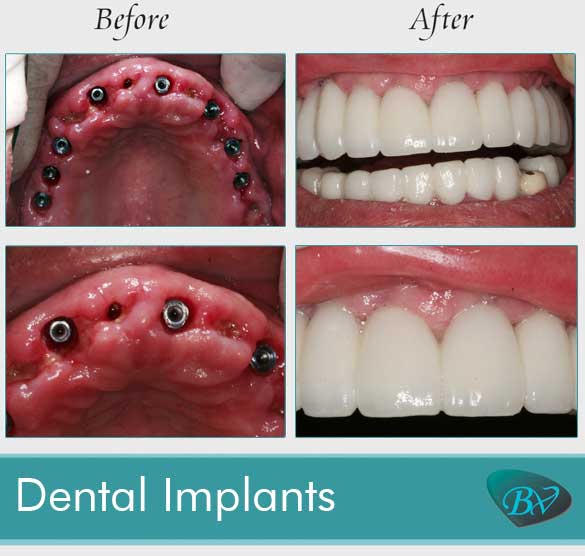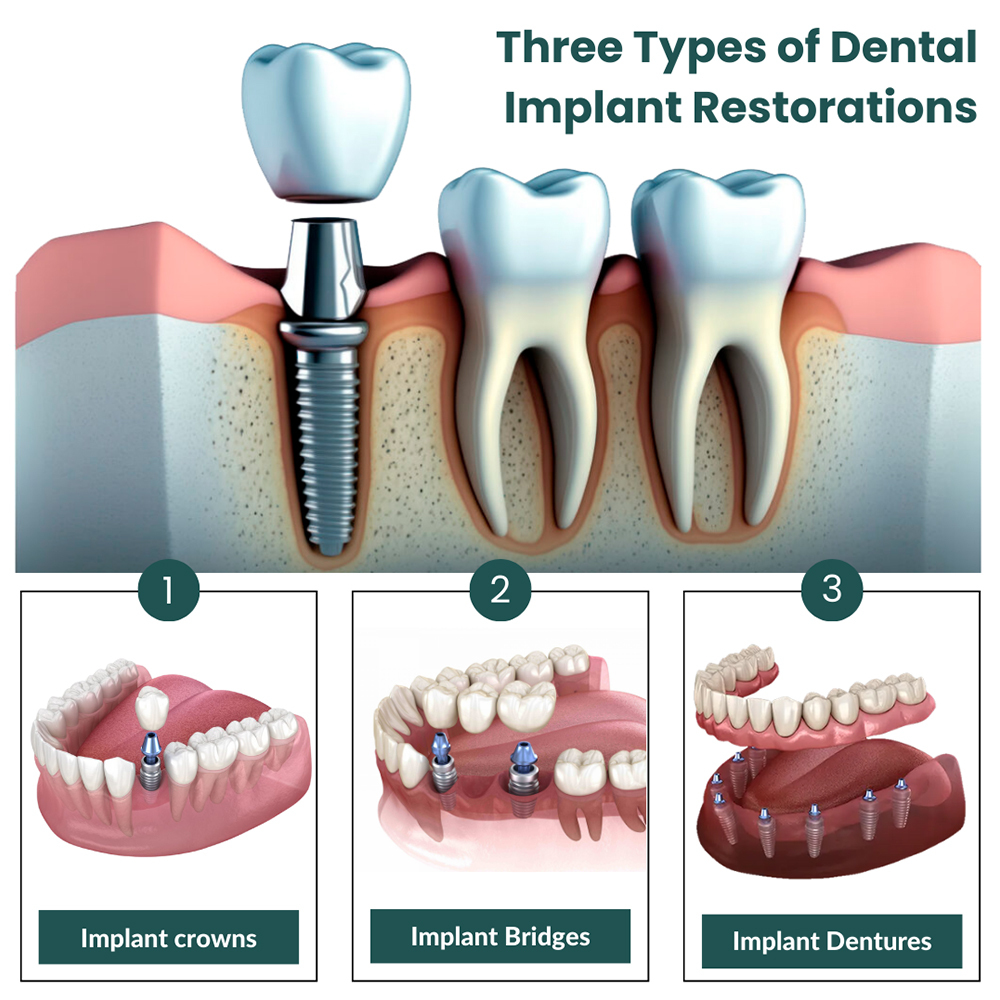6 Simple Techniques For Dental Sense
Wiki Article
The Definitive Guide to Dental Sense
Table of ContentsWhat Does Dental Sense Do?Indicators on Dental Sense You Should KnowThe 10-Minute Rule for Dental SenseThe Facts About Dental Sense Uncovered
are medical gadgets operatively implanted right into the jaw to restore an individual's ability to chew or their look. They offer support for man-made (phony) teeth, such as crowns, bridges, or dentures. When a tooth is lost because of injury or condition, a person can experience complications such as rapid bone loss, malfunctioning speech, or modifications to eating patterns that cause discomfort.Dental dental implant systems consist of an oral implant body and oral implant abutment and might also include a joint addiction screw. Dental implants. The dental implant body is operatively put in the jawbone in location of the tooth's origin. The oral implant joint is generally affixed to the implant body by the joint addiction screw and prolongs via periodontals right into the mouth to support the affixed synthetic teeth
(https://share.evernote.com/note/12f780ae-8ad1-693d-87b6-b9c57ca5907c)Structure of The Dental Implant System selecting oral implants, talk with your oral provider concerning the prospective advantages and risks, and whether you are a prospect for the procedure. Points to take into consideration: Your total health and wellness is a vital element in establishing whether you are a great candidate for dental implants, just how long it will take to recover, and how much time the implant may remain in location.
Cigarette smoking might affect the recovery process and decrease the lasting success of the implant. The healing process for the implant body might take several months or longer, throughout which time you generally have a short-lived joint in area of the tooth. the oral implant treatment: Meticulously follow the dental hygiene instructions given to you by your dental company.
The Facts About Dental Sense Uncovered
Implant failure can lead to the requirement for one more operation to fix or change the dental implant system. Recovers the capacity to eat Restores aesthetic appearance Aids maintain the jawbone from reducing as a result of bone loss Preserves the health of the bordering bone and periodontals Assists maintain nearby (nearby) teeth steady Improves high quality of life Damages to bordering all-natural teeth during implant positioning Injury to the surrounding tissues throughout surgical procedure, such as sinus opening Injury during surgical procedure (for example, crack of surrounding jawbone) Inadequate feature, such as seeming like the teeth do not attack with each other generally A sensation that the tooth is loosened or turning in area arising from an abutment screw loosening Implant body failing (looseness of the implant body) due to systemic infection, which may be most likely in individuals with uncontrolled diabetes as a result of local infection in bone and gums sustaining the dental implant body because of delayed recovery, which might be more probable in people who smoke Problem cleansing the gums around the dental implant, leading to bad dental health Unattended periodontal disease Post-surgical pins and needles due to nerve impingement or damage Always inform health and wellness care service providers and imaging specialists that you have dental implants before any kind of magnetic vibration imaging (MRI) or x-ray procedures.FDA is not knowledgeable about any kind of negative occasions reported for MRI or x-ray procedures with oral implants. Dental implants systems are typically constructed from materials that follow international agreement standards of the International Organization for Standardization (ISO) or ASTM International. These requirements have details of what makes a risk-free product.

A dental implant is a structure that replaces a missing out on tooth. With screw-like tools, the surgeon inserts a dental implant right into the jawbone, and it acts as an anchor for a man-made tooth, called a crown. A tool called a joint connects the fabricated tooth to the dental implant. The crown is customized to fit the individual's mouth and match the color of their teeth.
Fascination About Dental Sense
Some individuals are not qualified for dental implant surgery. It is for dental specialists to operate people with: intense illnessuncontrollable metabolic diseasebone or soft tissue disease or infectionIf these issues are dealt with, a person can have the surgical procedure. In, oral specialists avoid from running on people with: If people with any of the above undergo dental implant surgical treatment, there is a greater danger of the dental implant falling short.
Oral dental implant surgical treatment is a customized process. It's not the same for every person. The following provides a general introduction of what you can expect your dental practitioner, dental surgeon, periodontist or prosthodontist to do: Place the dental implant operatively. Offer you time to heal. Attach the post and last crown, bridge or denture.
Next off, your cosmetic surgeon will thoroughly place the oral implant right into your jaw. Your specialist will reposition your gum tissues and close the cut with stitches. If your dental implant is near the front of your mouth, your dental practitioner will certainly make a momentary tooth for you to wear till you recover. That way, you will not have a gap in your smile while you recuperate.
What Does Dental Sense Mean?
Throughout the healing phase, your jawbone should fuse to the dental implant. This procedure can take anywhere from 3 to nine months.Once your dental implant heals, your dentist can affix the abutment (tiny adapter post) and your last reconstruction (crown, bridge or denture). This usually takes about one hour to complete and look at more info might need a 2nd small surgical procedure. You should not really feel any discomfort during your dental implant procedure due to the fact that your company will certainly use medicine to numb your periodontals.
Report this wiki page